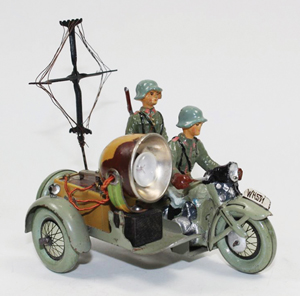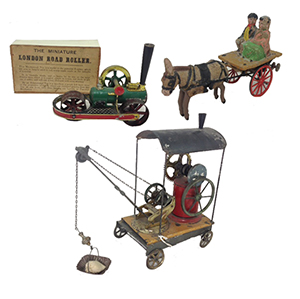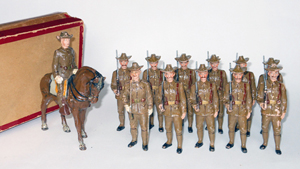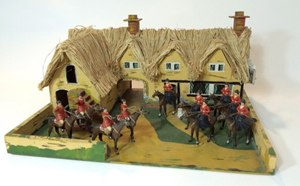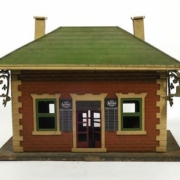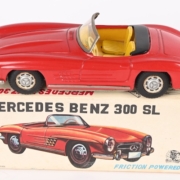For centuries, toy soldiers have carried on the fight
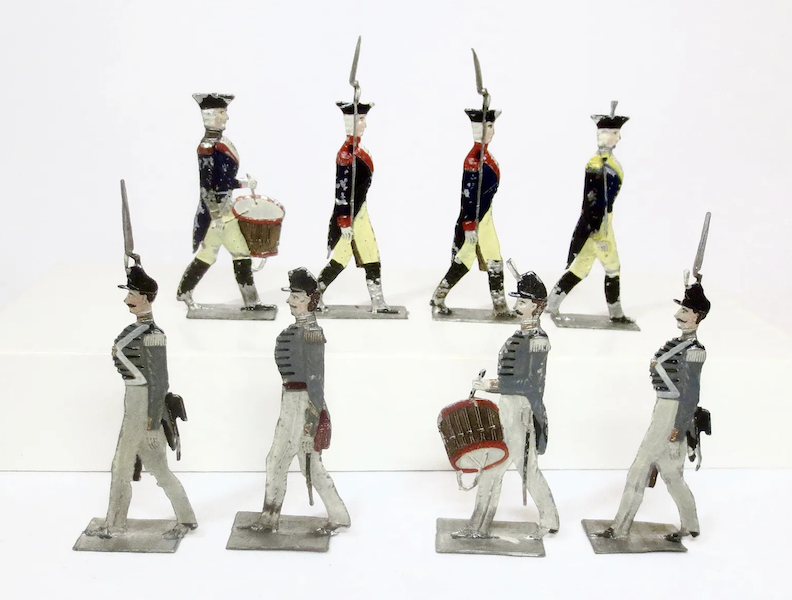
This set of German-made American Revolutionary War toy soldiers, hand-painted and having engraved features, sold for $375 plus the buyer’s premium in September 2020. Image courtesy of Old Toy Soldier Auctions USA and LiveAuctioneers
NEW YORK – Depicting fighting soldiers as tiny, easy-to-move figures has been a mainstay of military planning since medieval times. What started as a serious strategy-building tool ultimately evolved into the icon of childhood now known as the toy soldier.
The earliest soldier figures date back some 4,000 years and were hand-carved from wood, but the only ones that lasted were funerary items. The Egyptian prince Emsah was buried with a veritable army of soldier figures, which are now on display in a Cairo museum, still marching side by side.
Scholars believe Emsah’s soldiers were probably a symbolic reference to rank or meant to aid the prince in the afterlife, but soldier figures made later were intended to help military leaders in their planning. By the medieval period, these men were using crude, simple-looking tokens made from bronze, porcelain, terracotta or clay to plot war scenarios.
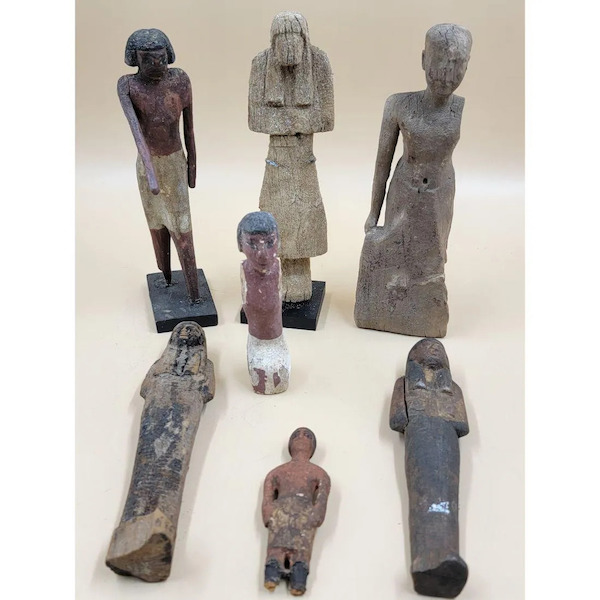
A seven-piece group of Egyptian funerary soldiers (or boatsmen) and pharaohs dating to between 2134 to 1776 B.C., meant to be placed in a tomb, earned $2,600 plus the buyer’s premium in January 2022. Image courtesy of Rbfinearts and LiveAuctioneers
Soldier figures were also made from silver by then, but strictly as playthings for European monarchs including Peter III of Russia and the French Kings Louis XIII and Louis the XIV. Napoleon gave his son, the King of Rome, an army of gold soldier figures. Those of means also had soldier figures made from silver, but most were eventually melted down for their intrinsic value once the interest waned. For that reason, antique silver soldier figures appear infrequently at auction and draw much interest when they do.
By the early 18th century, soldier figures had assumed a two-dimensional look. Metalworkers inspired by Frederick the Great’s military campaigns poured tin or tin alloy into a mold set between two pieces of slate to produce what came to be called “flats”: unpainted double-sided figures on stands. These flats command attention at auction, especially if they are in complete sets. By the beginning of the 19th century, flats were being produced in Germany with engraved outlines that added more defined features, and they were individually hand-painted on an assembly line, qualifying them as one of the first mass-market offerings of soldier figures.
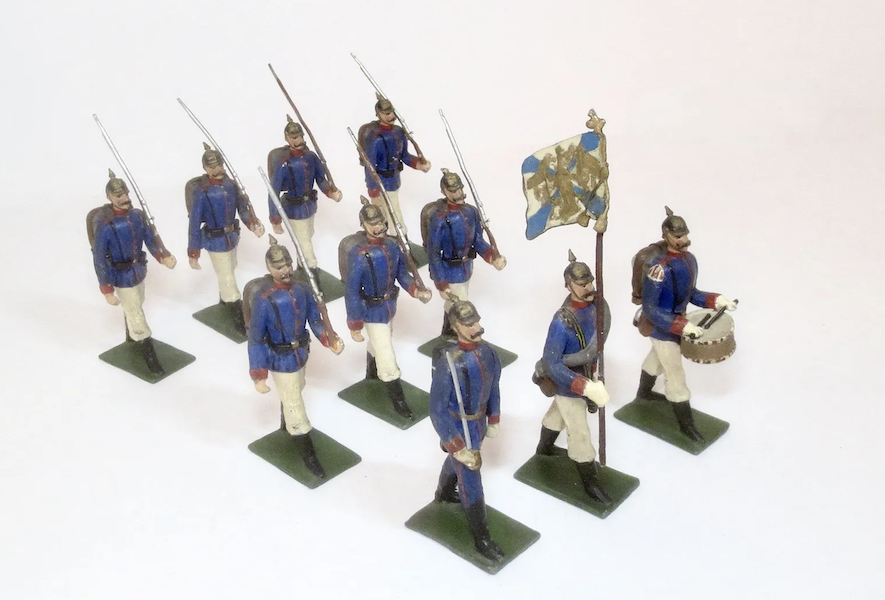
An unboxed 10-piece set of Heyde large-scale Prussian marching infantry toy soldiers achieved $6,500 plus the buyer’s premium in February 2022. Image courtesy of Old Toy Soldier Auctions USA and LiveAuctioneers
As of the late 19th century, collectors could purchase soldier figures cast in solid lead as hand-painted three-dimensional figures. They featured rigid poses and were markedly heavy as well as expensive to produce, so only the wealthiest could afford them.
Then, in 1893, William Britain changed the way soldier figures were made by introducing his hollow casting technique. He devised a way to pour lead into a mold and rotate it so that the lead cooled almost immediately. As it rotated, the lead slowly drained out, leaving a three-dimensional soldier figure that was hollow inside. His soldiers were less expensive to make and much lighter, too, allowing more collectors the chance to amass a set of their own. With this revolutionary manufacturing approach, Britains, the namesake company Britain founded in that year, soon dominated the market for soldier figures. Of course, imitators followed. They delivered similar-looking soldier figures that offered more realistic poses, colors and accompanying accessories.
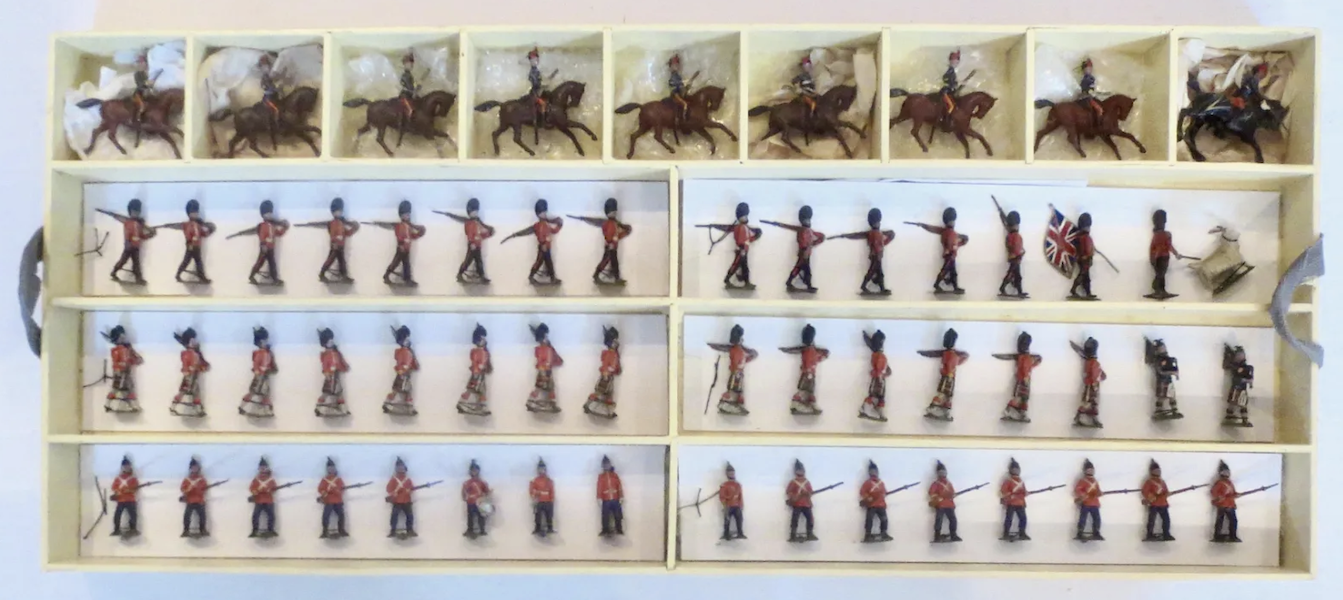
A 175-piece prewar Britains toy soldier set — the second-largest set made by the company — brought $11,000 plus the buyer’s premium in February 2022. Image courtesy of Old Toy Soldier Auctions USA and LiveAuctioneers
Any soldier figures manufactured before 1900 are known among collectors as “ancients” and generate strong bids at auction. 20th-century soldier figures, which are known mostly as toy soldiers, were made from plastic or resin and only see notable demand at auction when offered in complete sets in unopened boxes. By 1966, the use of lead for toy soldiers was finally outlawed due to its ill effects on human health. Collectors should take care to limit their exposure to lead soldier figures.
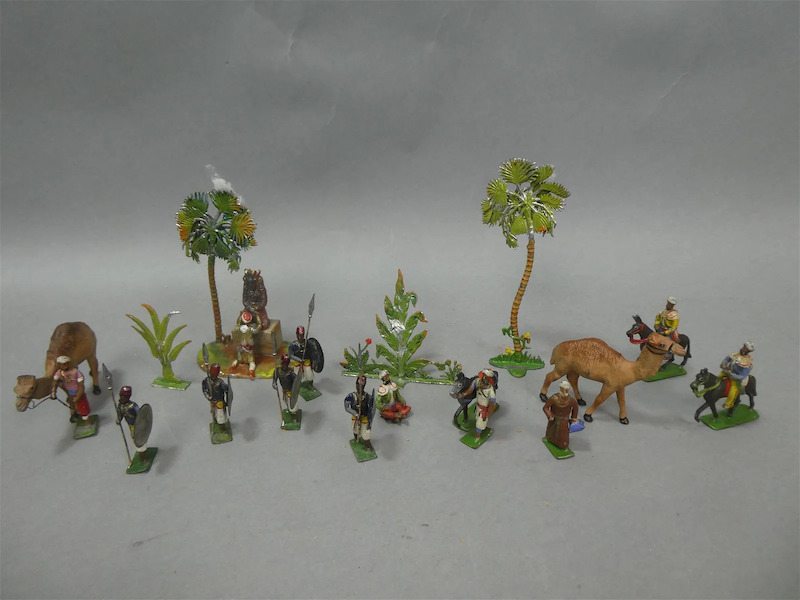
An unusual 16-piece set of 19th-century lead figures depicting Arabian soldiers, camels and palm trees realized $2,000 plus the buyer’s premium in March 2022. Image courtesy of Lodestar Auctions and LiveAuctioneers
Collectors consider four factors when acquiring soldier figures: condition, size, uniforms, and the manufacturer.
As with most collectibles (flags are an exception), condition is always paramount. Hand-painted soldier figures should possess as much of their original colors as possible, and they should be intact, with no parts missing. Flats shouldn’t be bent, wrinkled or chipped.
Size is measured in millimeters or by scale from the base to the top of the head. Most ancients are around 55 mm (which equates to slightly more than 2.25in) or a ratio of 1:30 (1:32 is the height of an average person) meaning one part of the soldier equals 30 parts of an actual person. A green plastic Army man sold by the bag averages about 76 mm (about three inches) and fits a 1:24 scale.
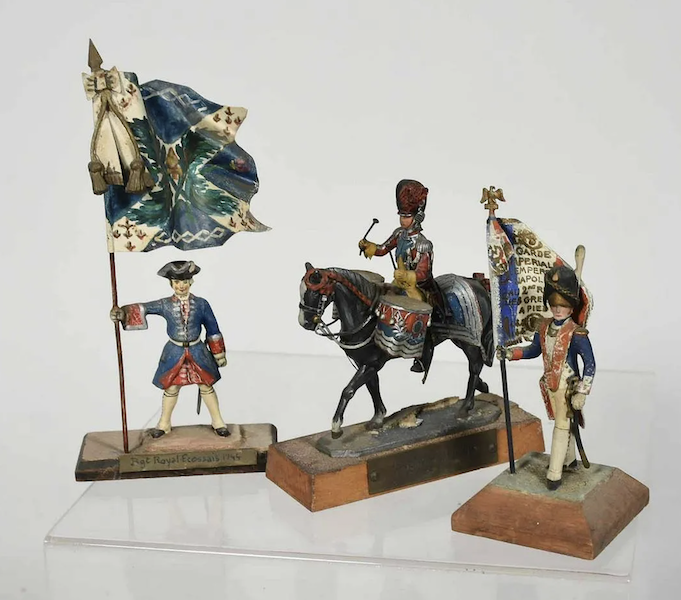
Detail from a 23-piece set of Napoleonic soldiers made from lead that sold for $9,000 plus the buyer’s premium in November 2020. Image courtesy of William Smith Auctions and LiveAuctioneers
Manufacturers of soldier figures during the ancients period tend to be ranked by era. For early flats, the German companies Heinrichson, Heyde, Gebruder Riechewere and Johann Gottfried Hilper are the most well-known. Pfeiffer, Elastolin and Lineol were known for early composites (some soldier figures of this type were manufactured in the early 20th century as well) while Mignot and Lucotte in France and the aforementioned German firm Heyde built reputations on their solid castings. Britains, discussed earlier in this article, remains in business and is still a leading producer of metal figures, but it caters to the very specialized collector. John Hill & Co., Britains’ main rival, produces more realistic soldier figures that have wider collectible appeal.
Soldier figures must sport the correct uniforms and insignia. Finishes, colors, poses and even having the right number of buttons matters immensely when assembling a complete collection. The periods of the Roman Empire, the European Wars, the Napoleonic Wars, the American Revolution and the Civil War are the favored conflicts among collectors of early ancients. The World Wars occupy the attention of collectors of modern soldier figures.
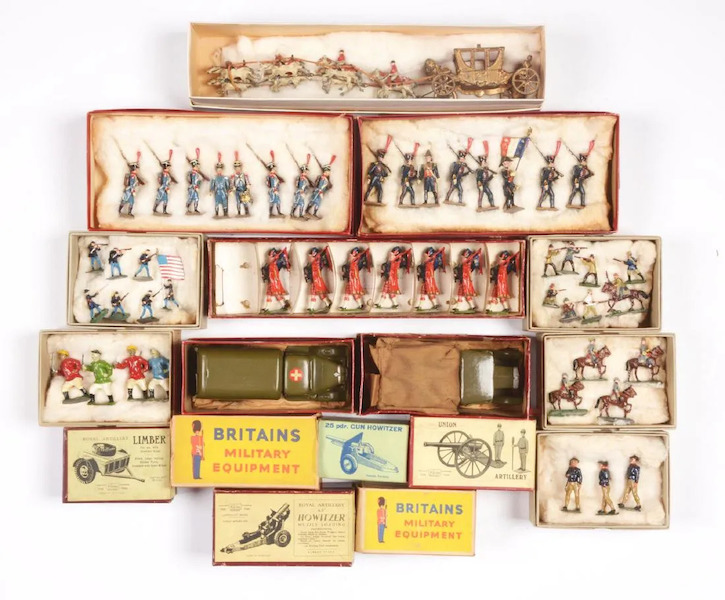
Detail from an auction lot that featured more than 200 complete sets of lead and diecast toy soldiers, mostly from Britains but some from more modern makers. It achieved $24,000 plus the buyer’s premium in March 2019. Image courtesy of Dan Morphy Auctions and LiveAuctioneers
Collecting soldier figures requires mastering a surprisingly large amount of information. Luckily there are many decent specialist websites on the topic, such as toysoldierco.com and warwickandwarwick.com. Major events such as the Chicago Toy Soldier Show and magazines such as the Toy Soldier Collector help keep collectors up to date.
Seeking soldier figures and toy soldiers provides an incentive to understand history, the art of warfare, military tactics, diplomacy and even the importance of peaceful resolutions of conflicts. Collecting soldier figures might be the most peaceful way to wage war.



